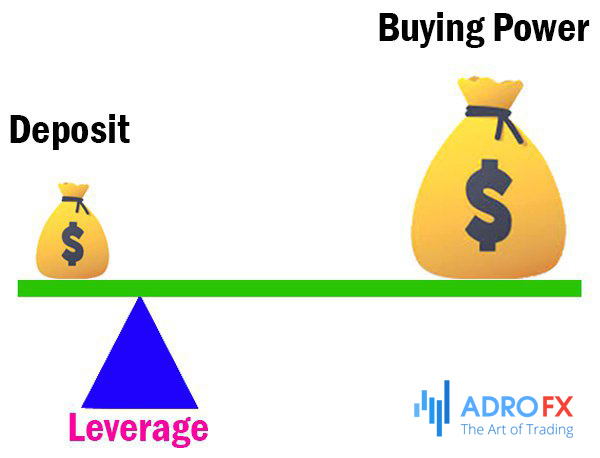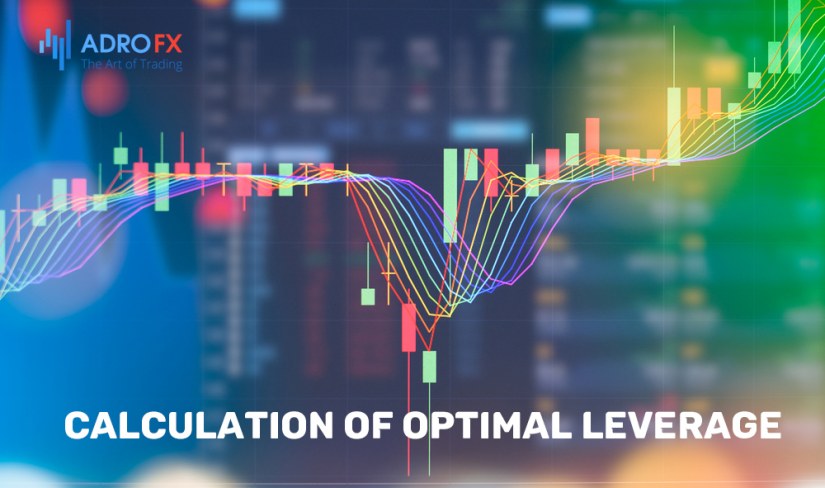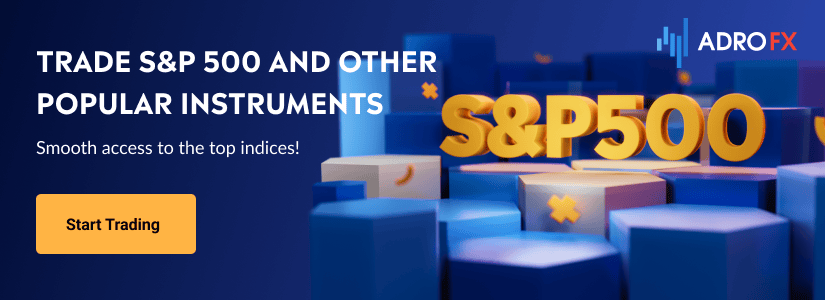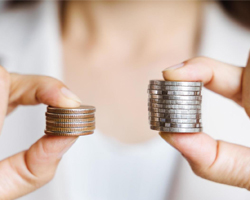How to Choose Leverage in Forex Trading

The use of leverage in forex trading can significantly increase the trader's profit, but it also carries a considerable risk of loss. But it is worth remembering that the risk is a controllable and calculable value. This allows the trader to maximize his profits from the used leverage and at the same time to keep the risk at a comfortable level.
Optimal Leverage
It often seems to beginner traders that the more leverage they employ, the more profit they will be able to make, but such a conclusion is wrong. If a trader has a profitable trading system and trades without leverage, then engaging and consistently increasing leverage will have a very interesting effect. At first, the leverage used will increase the trader's profit, and this increase can be tangible. And the more leverage the trader will use, the higher profit will be received. This will happen up to a certain point. The value of the leverage, above which the income ceases to grow, is called optimal and is denoted as Lopt.
 Based on the name of this parameter, we can conclude that the leverage Lopt is best for the trading strategy of the trader. But what will happen if the trader keeps increasing the leverage further? At such an increase profit will not begin to increase, but decrease at seemingly correct actions to maximize it. And the more the trader will increase the leverage after the optimal value, the less profit will be brought by his trading system. Moreover, with a further increase of the leverage, the profit from initially profitable trading will be replaced by the loss. That value of leverage at which its further increase will make the system bring losses is called maximum leverage, Lmax. It turns out that leverage may influence one and the same trading system in absolutely different ways, both increasing profit from trading and reducing the profitability of the trading system. But the question arises - why does this happen, and what is such an ambiguous effect of leverage?
Based on the name of this parameter, we can conclude that the leverage Lopt is best for the trading strategy of the trader. But what will happen if the trader keeps increasing the leverage further? At such an increase profit will not begin to increase, but decrease at seemingly correct actions to maximize it. And the more the trader will increase the leverage after the optimal value, the less profit will be brought by his trading system. Moreover, with a further increase of the leverage, the profit from initially profitable trading will be replaced by the loss. That value of leverage at which its further increase will make the system bring losses is called maximum leverage, Lmax. It turns out that leverage may influence one and the same trading system in absolutely different ways, both increasing profit from trading and reducing the profitability of the trading system. But the question arises - why does this happen, and what is such an ambiguous effect of leverage?
The fact is that any trading method, in addition to profitable trades, assumes a certain amount of losing trades. Now let's imagine that a trader places an order without leverage on 10% of their deposit and receives 10% on the trade, which, in turn, brings plus 1% of the volume of the trader's deposit. If a trader had traded with the leverage of 2, such a position would have brought them 2%, if with the leverage of 10 - 10% and so on, which seems very tempting.
But this situation should be looked at from another angle. If a trader trades without leverage and enters the market with 10% of the deposit, but receives not a profit but a loss of, say, 5% of trade, that is 0.5% of capital. This seems to be a comfortable value. But if the trader uses leverage, their loss will increase manifold. So, if the leverage of 2 is used, the loss will be 2%, which is also in the range of acceptable values. But if the trader uses the leverage, a 0.5% loss per trade will already bring them minus 10% of the capital. And now let us imagine that with this leverage the trader places a series of five losing trades, that is, the loss will be 50% of the capital.
Here another effect begins to appear. If the trader has only half of the initial capital, in order to return to a break-even point, they will have to earn 100% of his assets instead of 50%, which is a more difficult task. It turns out that leverage is capable of generating considerable losses in a series of losing trades, the leveling of the negative effect of which is a difficult task when using exorbitantly high leverage.
Trading System Ratios
It is necessary to understand that the leverage is selected not for the trading asset, but for the trading system. It has coefficients, the values of which will prompt you to which leverage is optimal for the realization of this trading method. Any trading system is tested at a certain period of time, during which a certain amount of positions (not less than 30) is executed.
Let's denote the obtained amount of trades by n. Each of these n trades has a certain percentage result (to the initial capital value), in some cases, it is positive, and in other cases - negative. The sum of these results is the profitability of the system for the analyzed period. For example, if five trades were performed, two of which yielded 5%, one more - 4%, and the other two had losses of 1% and 2%, the total result would show a profit of 11%. But in addition to such obvious parameters of the system, there are others.
It is advisable to calculate the proportion of positive and negative trades. In our case, there were three positive (let's call them n+) and two negative (n-) trades out of five. That is the share of positive trades of the total number (called profit probability, or PP) is 3/5, or 60%, and the share of negative ones (loss probability, or LP) is respectively 2/5, or 40%. Then calculate the total positive return of the system (E+) by summing up the positive results of successful trades. In our case, it is 5+4+5, which equals 14%. Similar actions should be performed for negative trades (negative profitability of the system E-). Thus, we obtain -2+(-1), which is equal to -3%.
Next, calculate the average positive return on trade (TP) by dividing the total positive return E+ by the number of positive trades n+. In our case we will get 14/3, i.e. 4.6% - this will be our average expected value from a positive trade at a statistically significant time period or average Take Profit. Next, calculate the average Stop Loss (SL) by dividing the total negative return E- by the number of negative trades n-. In our case, it is 3/2, or 1.5%. The next step is to calculate the so-called Profit Factor (PF), which is equal to the ratio of the average Take Profit (TP) to the average Stop Loss (SL), which in our case is 4.6/1.5, or 3.1. This figure shows that the average positive trade is 3.1 times more profitable than one losing trade.
Considering the above ratios, we can conclude that in order to use the leverage the trader's trading system must have a high profit probability PP, high profit factor PF and low average Stop Loss SL.
Calculation of Optimal Leverage

Lopt (optimal leverage for a trading system) can be calculated as the difference between the system's Profit Factor PF and one, divided by the Profit Factor PF and multiplied by the Profit Probability PP, divided by 2 and the average Stop Loss SL on unprofitable trades.
The formula for Lopt can be written as:
Lopt=(PF-1)/PF*PP/2/SL,
where PF is the profit factor, PP is the profit probability, and SL is the average Stop Loss.
For example, a system of 1000 trades gives 400 profitable and 600 losing trades in history (there are usually more losing trades even in profitable systems). If the profit factor is 3, and SL is 0.1, we obtain a PP of 600/1000 = 0.4. Lopt = (3-1)/3*0.4/2/0.1 = 1.3. It means that using leverage higher than 1.3 will not increase the yield.
The leverage contains not only the potential but also the risk. Understanding your trading system and its adaptation to the market conditions in order to increase the profit factor and the profit probability and simultaneously decrease the average Stop Loss helps to reveal the potential. This, in turn, will allow you to use more leverage.
About AdroFx
Established in 2018, AdroFx is known for its high technology and its ability to deliver high-quality brokerage services in more than 200 countries around the world. AdroFx makes every effort to keep its customers satisfied and to meet all the trading needs of any trader. With the five types of trading accounts, we have all it takes to fit any traders` needs and styles. The company provides access to 115+ trading instruments, including currencies, metals, stocks, and cryptocurrencies, which make it possible to make the most out of trading on the financial markets. Considering all the above, AdroFx is the perfect variant for anyone who doesn't settle for less than the best.










